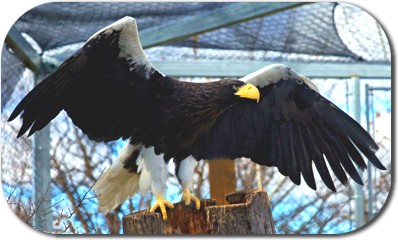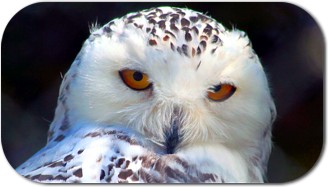 Pursuing Biodiversity Conservation at the Assiniboine Park Zoo
Pursuing Biodiversity Conservation at the Assiniboine Park Zoo
By Dr. Robert Wrigley, Zoo Curator (Please see Update)
Introduction
“Biodiversity in Jeopardy – Where do we fit?” This year’s Canadian Association of Zoos and Aquariums (CAZA) Conference theme epitomizes the crossroads where zoos and aquariums find themselves in the face of escalating dire news in the fields of wildlife conservation and environmental health. The challenges of researching and preserving biodiversity, in our own regions or in other countries, are so daunting that we as zoo and aquarium biologists, managers and animal-care staff must make well-thought-out decisions on how we may best contribute. Of course these decisions are affected by a number of factors such as institutional priorities, personnel expertise and interests, travel budgets, field logistics, and time available to pursue such programs.
Other than providing an occasional grant to a conservation fund (e.g., Snow Leopard Trust) and our staff participation in the American Association of Zoo Keepers “Rummaging for Rhinos” fund-raising program, the Assiniboine Park Zoo (APZ) has not been in a position to carry out major conservation projects in other countries. Consequently, we have focused our activities within Manitoba, and on participation in formal breeding programs: Species Survival Plans (SSPs), Canadian Collection Plans (CCPs), European Endangered Species Program (EEPs), hosted by international zoo organizations. This paper highlights the various biodiversity-related programs at our Zoo and in partnership with a number of other local conservation groups. I also offer my own experiences and perspectives while working for over four decades in the fields of conservation, ecology and interpretation. I hope these examples will encourage especially new zoo/aquarium staff to seek out new and innovative ways of being involved in the conservation movement of wildlife and wild lands.
Editor's Note: Modern zoos have come along way from their early origins as the private menageries of the wealthy. (For some historical background on zoos, check out this Wikipedia article on Zoos.) Despite the efforts of zoos to promote ethical animal care, public education and wildlife conservation, there remains a segment of society that sees zoos as cruel and unnatural, calling it a tragedy to cage wild animals for public display. Sadly, the real tragedy is that in the very near future many of these animals may only exist in zoos. As a life-long Winnipegger I've been to the Assiniboine Park Zoo many times. Yet, until recently I was unaware of the extent of the conservation role played by our Zoo. That's why I encouraged Dr. Wrigley to let me publish this article he wrote for the CAZA so that more of you can learn of the great work being done there. Doug Collicutt, NatureNorth.com |
Formal Breeding Programs
 The Assiniboine Park Zoo has been participating for decades in 63 formal animal-breeding programs, including 3 Canadian Collection Plans, 16 American Zoo and Aquarium Association (AZA) Species Survival Plans, 33 AZA Population Management Plans, 1 European Endangered Species Program, and 10 regional and international Studbooks. As examples, the Zoo was a founding member of several Species Survival Programs (e.g., Siberian Tiger) and we have been successful in breeding (at APZ and with specimens on loan) 145 Lion-tailed Macaques, 23 Grey Gibbons, 10 Red Pandas, 34 Snow Leopards, and 154 Afghanistan Markhor – all critically endangered species. These offspring have been distributed to dozens of zoos around the world. Animal Collections Manager, Phil King has been instrumental in maintaining the Zoo’s participation and registration in these breeding programs, and the entire animal collection, covering a span of 106 years, has been entered into the International Species Information System (ISIS) inventory. This places the Assiniboine Park Zoo within the top 6% of world zoos in degree of record completion – a remarkable achievement by a dedicated zoo professional.
The Assiniboine Park Zoo has been participating for decades in 63 formal animal-breeding programs, including 3 Canadian Collection Plans, 16 American Zoo and Aquarium Association (AZA) Species Survival Plans, 33 AZA Population Management Plans, 1 European Endangered Species Program, and 10 regional and international Studbooks. As examples, the Zoo was a founding member of several Species Survival Programs (e.g., Siberian Tiger) and we have been successful in breeding (at APZ and with specimens on loan) 145 Lion-tailed Macaques, 23 Grey Gibbons, 10 Red Pandas, 34 Snow Leopards, and 154 Afghanistan Markhor – all critically endangered species. These offspring have been distributed to dozens of zoos around the world. Animal Collections Manager, Phil King has been instrumental in maintaining the Zoo’s participation and registration in these breeding programs, and the entire animal collection, covering a span of 106 years, has been entered into the International Species Information System (ISIS) inventory. This places the Assiniboine Park Zoo within the top 6% of world zoos in degree of record completion – a remarkable achievement by a dedicated zoo professional.
The Assiniboine Park Zoo was a founding member of several AZA Species Survival Programs, such as the Siberian Tiger SSP.
We are currently finalizing an exchange with the Sakkarbaug Zoo in India which will create a North American captive-breeding plan for the critically endangered Asiatic Lion. This will augment existing breeding plans in India and Europe, totaling about 100 individuals (only 300 Asiatic Lions remain in the wild). The Burrowing Owl is listed as endangered in Manitoba, with fewer than five pairs returning to reproduce in recent years. The Zoo has re-established a breed-and-release program in cooperation with Manitoba Conservation and the University of Winnipeg. The above are examples of maintaining genetically viable captive populations – an important means of contributing to the conservation of at-risk exotic and native wildlife.
Rescue Center
Zoos and aquariums are often called upon to rescue, treat and house animals from the wild that would otherwise perish. While some animals may be rehabilitated and released back to the wild, others must be maintained in captivity for the remainder of their lives. The Zoo’s plus-46-year-old rehabilitated pair of Bald Eagles (which raised 23 chicks) is a prime example of wildlife resilience in a species that averages only 15-19 years in the wild. These two remarkable birds were the subject of an article in International Zoo News (Vol. 55/8, December 2008), entitled: “Bald Eagle Longevity and Reproduction.” These two birds hold species’ records for both longevity and ages of successful breeding. The Zoo’s files reveal that 7 Golden and 110 Bald Eagles have been rehabilitated and either maintained here or sent to dozens of other facilities. The public is largely unaware of the role played by zoos and aquariums in saving the lives of injured and orphaned wildlife. The Zoo also cooperates closely with several local wildlife-rehabilitation organizations and a veterinary college.
With the demise of Polar Bear populations (especially in Hudson Bay) linked to global warming, the Zoo has decided to concentrate on this native species, in cooperation with Manitoba Conservation, Polar Bears International, and other partners. As part of the Zoo’s new Master Plan redevelopment, the current Bear Range is being renovated to hold up to eight orphaned or injured Polar Bears. In 2011, an International Polar Bear Conservation Center will open, which will support research and carry out education programs aimed at conserving this endangered species. The following year will see the creation of extensive outdoor and indoor facilities capable of holding and displaying up to eight adult bears, including breeding pairs. Perhaps there is no other species that symbolizes more the sad plight of majestic wild animals as a result of human-caused factors, and the impending loss of Arctic biodiversity.
Interpretive Programs
 An important method of encouraging biodiversity conservation is an informed public, sensitized to supporting conservation legislation, programs and budgets. Exhibit signs, interpreter-led tours, zoo camps, and special shows and events all contribute to helping people understand the causes of wildlife loss and extinction, and that we depend on healthy ecosystems and environments for our very lives and economies. The Zoo’s 114 bilingual interpretive signs are available on the web sites of CAZA and the Assiniboine Park Conservancy. Like other CAZA members, our Education Department carries out a variety of programs dealing with biodiversity conservation and endangered species, and we often receive requests for presentations on these topics from school and nature groups. Following many decades of limited budgets, the new governing body, the Assiniboine Park Conservancy, has embarked on a 120-million dollar Master Plan that will create an entirely new zoo. The 2010 Baines Award-winning Pavilion of the Lions, the Steller’s Sea Eagle Exhibit, and the Sechuan Takin Exhibit demonstrate a new standard for exhibits being planned.
An important method of encouraging biodiversity conservation is an informed public, sensitized to supporting conservation legislation, programs and budgets. Exhibit signs, interpreter-led tours, zoo camps, and special shows and events all contribute to helping people understand the causes of wildlife loss and extinction, and that we depend on healthy ecosystems and environments for our very lives and economies. The Zoo’s 114 bilingual interpretive signs are available on the web sites of CAZA and the Assiniboine Park Conservancy. Like other CAZA members, our Education Department carries out a variety of programs dealing with biodiversity conservation and endangered species, and we often receive requests for presentations on these topics from school and nature groups. Following many decades of limited budgets, the new governing body, the Assiniboine Park Conservancy, has embarked on a 120-million dollar Master Plan that will create an entirely new zoo. The 2010 Baines Award-winning Pavilion of the Lions, the Steller’s Sea Eagle Exhibit, and the Sechuan Takin Exhibit demonstrate a new standard for exhibits being planned.
Media Information
Developing a close relationship with the media is an economical means of conveying frequent biodiversity-conservation messages to a large audience and especially to those individuals who do not regularly visit zoos or aquariums. Most people have no idea of the escalating loss of species at home and around the world, or how they can contribute to solving major problems like climate change. The Assiniboine Park Zoo prepares about 10 public-service announcements each year, which generate through interviews up to 250 media hits (sometimes international) on television, radio, print and the internet. The involvement of zookeepers (with personal anecdotes about their animals) and high-profile dignitaries such as the Mayor of Winnipeg, clearly help draw media response. Education Director Scott Gray and Senior Veterinarian Dr. Chris Enright participate in weekly radio and television shows which frequently feature species at risk and other biodiversity-related subjects.
In the remainder of this article, Dr. Wrigley modestly presents a variety of activities he, and others, undertake on behalf of the APZ. Though he presents this information in a "matter of fact" manner, those of us who know him understand that these activities are, in fact, above and beyond the call of normal zoo duties. Dr. Wrigley is a tireless promoter of biodiversity education and conservation in Manitoba. (Doug C., NatureNorth) |
Publications
Written materials such as pamphlets, popular and journal articles, and books are another means of conveying information on biodiversity to the public, students and researchers. Over the years I have enjoyed researching and publishing numerous articles on animals, plants, and zoo-related topics, such as the CAZA article entitled “Buzzword Biodiversity,” (available on NatureNorth) plus a number of books such as “Mammals in North America,” “Polar Bear Encounters at Churchill,” “Manitoba’s Big Cat,” and “The Encyclopedia of Manitoba,” in which I served as Zoological Editor. In this 846-page Encyclopedia, I and my Manitoba colleagues in various biological disciplines contributed 200 lengthy articles on all major wildlife groups characteristic of terrestrial, freshwater and marine ecosystems of Manitoba, and including all life forms from microscopic protozoans to moose and whales. This was in effect the first accounting of Manitoba biodiversity, including numbers of species (actual and estimated) in certain families and orders – a complex effort that has not been attempted in many other jurisdictions. Surprising to even other provincial biologists, Manitoba is home to the remarkable 7-metre-long Greenland Shark, the up-to-400 kilogram Arctic Lion’s Mane Jelly, over 15,000 species of insects, 700 spiders, 170 mollusks, 150 fish, 16 amphibians, 8 reptiles, 400 birds, 86 mammals, 2500 plants and 3000 fungi.
Manitoba Endangered Species Advisory Committee
 Since its inception in 1991, a number of colleagues and I have served on an Endangered Species Advisory Committee, whose mandate is to review and recommend to the Manitoba Minister of Conservation species that are in need of legislative protection, in accordance with an Endangered Species Act passed in 1990. Thus far, over 50 species have been reviewed, and 12 species are listed as Endangered, 15 are Threatened, 8 are extirpated, and 2 species are extinct. The most-recent listing is for Woodland Caribou, which is now recognized as Threatened. We are in the process of ensuring that our listings correspond to those of COSEWIC (the Convention on the Status of Endangered Wildlife in Canada). Risk-assessment and recovery-plan committees face a monumental and growing task; in reality, thousands of species are at risk across Canada from habitat destruction, invasive-species competition, diseases, pollution, climate change, and other human-caused factors.
Since its inception in 1991, a number of colleagues and I have served on an Endangered Species Advisory Committee, whose mandate is to review and recommend to the Manitoba Minister of Conservation species that are in need of legislative protection, in accordance with an Endangered Species Act passed in 1990. Thus far, over 50 species have been reviewed, and 12 species are listed as Endangered, 15 are Threatened, 8 are extirpated, and 2 species are extinct. The most-recent listing is for Woodland Caribou, which is now recognized as Threatened. We are in the process of ensuring that our listings correspond to those of COSEWIC (the Convention on the Status of Endangered Wildlife in Canada). Risk-assessment and recovery-plan committees face a monumental and growing task; in reality, thousands of species are at risk across Canada from habitat destruction, invasive-species competition, diseases, pollution, climate change, and other human-caused factors.
Manitoba Ecological Reserves Advisory Committee
Manitoba’s Ecological Reserves Program began in 1973 with the goal of offering the highest-level of protection for wildlife, habitats and landscapes on Crown lands. The Ecological Reserves Advisory Committee’s function is to prepare, review and make recommendations to the Minister of Conservation on properties worthy of inclusion into the program. I have been a member of the Committee since 1995 and thus far our work has resulted in the protection of 62,000 hectares within 22 Ecological Reserves. There are a number of proposals for Arctic reserves, such as the Seal River and Nelson River estuaries, however implementation has been complicated due to marine waters falling within the jurisdiction of Fisheries and Oceans Canada. I have tried to perform a coordinating role to help ensure that ecological reserves capture lands and waters inhabited by species designated under the Endangered Species Act. Ecological reserves, provincial and federal parks, and other protected areas are likely the most-important means of ensuring the survival of regional biodiversity, in light of escalating industrial demands and anticipated geographical adjustments of ecosystems to climate change.
Nature Conservancy of Canada (Manitoba Region)
The Nature Conservancy is Canada’s largest conservation organization whose goal is protecting biodiversity by acquiring private lands through purchase and donation, and by signing conservation easements with landowners. Stewardship of these properties is recognized as essential in maintaining diverse wildlife habitats and populations. Since its inception in 1962, NCC has acquired 800,000 hectares of ecologically significant land across Canada, and is raising in the next five years an astounding 500 million dollars for conservation of Canada’s wild lands and their biodiversity. I have had the opportunity to serve as a member of the Manitoba Regional Board of Directors for 10 years, and to chair the Scientific Advisory Committee, which reviews and recommends staff proposals for land acquisition, and approves major conservation plans. NCC Manitoba focuses on six conservation areas in southern Manitoba, including the endangered Tall-grass and Mixed-grass prairies, which are home to many of Manitoba’s at-risk species of wildlife, especially migratory songbirds. The Manitoba Region has conserved 132 properties totaling 16,393 hectares, and plans to add an average of 40 properties annually. Participating on the NCC Board is so rewarding, knowing that each parcel of land acquired is preserved in perpetuity for tens of thousands of species.
Parks and Protected Areas Research Forum of Manitoba.
Founded in 2001, this annual conference brings together people from academia, government, private consultants, and students in the fields of biology, environment, sociology, archaeology and park management. It is a great opportunity to learn about and to share new research being conducted in municipal, provincial and national parks and other protected areas. I have the pleasure of being the Zoo representative on the Planning Committee. The January-2011 Forum’s theme is highlighting biodiversity research and management in the North and South, and is being held jointly with the Churchill Northern Studies Center and Wapusk National Park. Arctic biodiversity and the Polar Bear will feature prominently on the agenda. I plan to deliver a presentation comparing the mammal faunas and their ecology in tundra and prairie communities.
Personal Research in Mammalogy and Entomology
 While I was employed as a Curator of Mammals and Birds at the Manitoba Museum, I and my colleagues studied small mammals in over 1000 habitats in the province, from tundra and forests to the prairies. We recorded detailed ecological field notes on over 75 species, prepared over 20,000 specimens for the Museum research collection, and published numerous books, journal papers, and popular articles. This was the first inventory of the mammals of Manitoba. These data have also proven useful in government wildlife-management activities (e.g., Manitoba Conservation Data Center), university research, and presentations to the public and universities. For the past 16 years, I have focused my personal research on entomology – which includes groups like beetles, which attain great biomass and have major impacts on the functioning of food webs and ecosystems. The knowledge of arthropod biodiversity is in its infancy in Manitoba and other areas of Canada, and it is important to determine what species are at risk before they are eliminated by habitat loss and climate change. In this regard, I have collected, prepared and donated to the University of Manitoba’s J.B. Wallis Museum of Entomology over 10,000 specimens of arthropods, which will be available for study for many centuries. I publish reports on my field activities throughout North America in the Newsletter of the Entomological Society of Manitoba, which is available on-line.
While I was employed as a Curator of Mammals and Birds at the Manitoba Museum, I and my colleagues studied small mammals in over 1000 habitats in the province, from tundra and forests to the prairies. We recorded detailed ecological field notes on over 75 species, prepared over 20,000 specimens for the Museum research collection, and published numerous books, journal papers, and popular articles. This was the first inventory of the mammals of Manitoba. These data have also proven useful in government wildlife-management activities (e.g., Manitoba Conservation Data Center), university research, and presentations to the public and universities. For the past 16 years, I have focused my personal research on entomology – which includes groups like beetles, which attain great biomass and have major impacts on the functioning of food webs and ecosystems. The knowledge of arthropod biodiversity is in its infancy in Manitoba and other areas of Canada, and it is important to determine what species are at risk before they are eliminated by habitat loss and climate change. In this regard, I have collected, prepared and donated to the University of Manitoba’s J.B. Wallis Museum of Entomology over 10,000 specimens of arthropods, which will be available for study for many centuries. I publish reports on my field activities throughout North America in the Newsletter of the Entomological Society of Manitoba, which is available on-line.
Manitoba Bio-Net
The Bio-Net, or short for Biodiversity Network, is a committee consisting of representatives of a dozen nature organizations in Manitoba (such as the Zoo, Manitoba Museum, and the Invasive Species Council), and we meet periodically to plan and coordinate educational programs surrounding Biodiversity Day, and this year of course, The International Year of Biodiversity. Each organization carries out and reports on its interpretive activities, such as exhibits, radio interviews, newspaper articles, zoo tours, and articles posted on a web site entitled NatureNorth. These programs help ensure that every member of the public has heard of the word biodiversity, and has a basic understanding of what it means.
Biodiversity Inventory of Manitoba
I have begun discussions with the Manitoba Conservation Data Center and the Manitoba Regional Board of the Nature Conservancy of Canada on a proposal to initiate and fund a long-term biodiversity inventory of Manitoba, which would identify as many species of possible within the province, their approximate distribution, and their conservation status. This challenging objective is called an “All-Taxa Biodiversity Inventory.” If successful, it would generate in time an inventory of tens of thousands of species from all five Kingdoms of life. I suspect that there are up to half-a-million species in Manitoba, when considering all phyla, including protozoans, algae, fungi, bacteria, and archaea. We know little about this huge diversity of life, how it works within intricate ecosystems, or how to manage it successfully. Finding out what is living in our own backyard is vital to conserving local biodiversity. Hopefully zoos and aquariums across Canada will participate in partnerships to inventory and care for wildlife of their regions.
Conclusion
 These activities summarize what the Assiniboine Park Zoo is contributing to biodiversity knowledge and preservation in our home province and internationally. I hope that the new Assiniboine Park Conservancy and Zoo will expand on these programs, since the ecological challenges of human over-population, industrial expansion and climate change are increasingly impacting on the diversity of life in Canada and everywhere on our planet. Sadly we have reached the ‘salvage stage’ of efforts to slow the rate of species extinction, with periodic loss of well-known mega-fauna, and likely over 100 species of small life forms every day.Ten years ago I published an article in the CAZA Newsletter and in International Zoo News entitled, “Overpopulation, Poverty and Wildlife Extinction,” (available in NatureNorth) in which I reiterated the inescapable conclusion that reduction of the human-population was absolutely essential to preserve biodiversity and the environment, and that the overpopulation crisis was the root cause of humanity’s mounting series of tragedies. Our CAZA organization and zoos and aquariums worldwide have largely remained silent on this critical issue, and I urge CAZA to seriously examine this issue, incorporate it into policies and messages, and to partner with progressive conservation organizations such as the Center for Biological Diversity.
These activities summarize what the Assiniboine Park Zoo is contributing to biodiversity knowledge and preservation in our home province and internationally. I hope that the new Assiniboine Park Conservancy and Zoo will expand on these programs, since the ecological challenges of human over-population, industrial expansion and climate change are increasingly impacting on the diversity of life in Canada and everywhere on our planet. Sadly we have reached the ‘salvage stage’ of efforts to slow the rate of species extinction, with periodic loss of well-known mega-fauna, and likely over 100 species of small life forms every day.Ten years ago I published an article in the CAZA Newsletter and in International Zoo News entitled, “Overpopulation, Poverty and Wildlife Extinction,” (available in NatureNorth) in which I reiterated the inescapable conclusion that reduction of the human-population was absolutely essential to preserve biodiversity and the environment, and that the overpopulation crisis was the root cause of humanity’s mounting series of tragedies. Our CAZA organization and zoos and aquariums worldwide have largely remained silent on this critical issue, and I urge CAZA to seriously examine this issue, incorporate it into policies and messages, and to partner with progressive conservation organizations such as the Center for Biological Diversity.
Dr. Robert Wrigley is the Curator at the Assiniboine Park Zoo. Trained as an ecologist, he held the positions of Curator of Birds and Mammals, and Museum Director, at the Manitoba Museum, and was the first Director of the Oak Hammock Marsh Interpretive Center in Stonewall, Manitoba. (Please see Update) |
Image Credits
All images in this article are from photographs taken at Assiniboine Park Zoo by Winnipeg photographer, Ron Boily. To see more of Ron's work follow this link: Pincollector1 on Wunderground.
Visit the Zoo online at: www.assiniboineparkzoo.ca
You can help NatureNorth produce more great articles with a secure donation through PayPal. Our Google Adsense ads pay our server costs, but that's about it. To learn more follow this link: Support NatureNorth. Thank-you! |
|
Return to: NatureNorth at the Zoo | Winter Issue | NatureNorth Front Page

